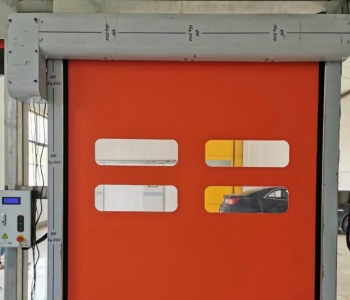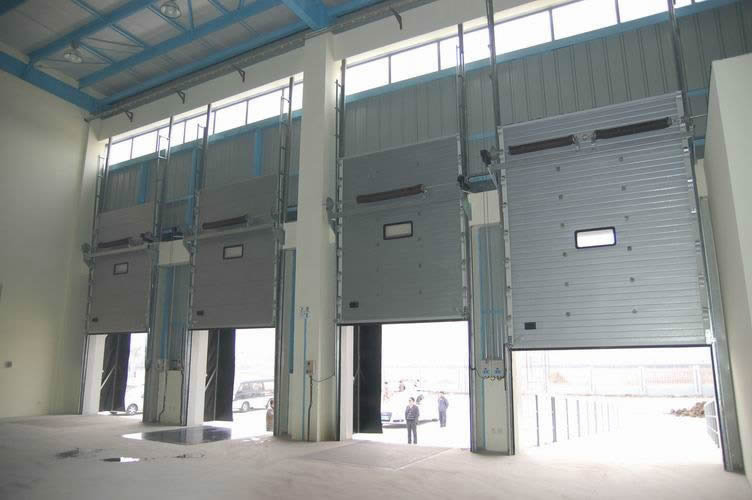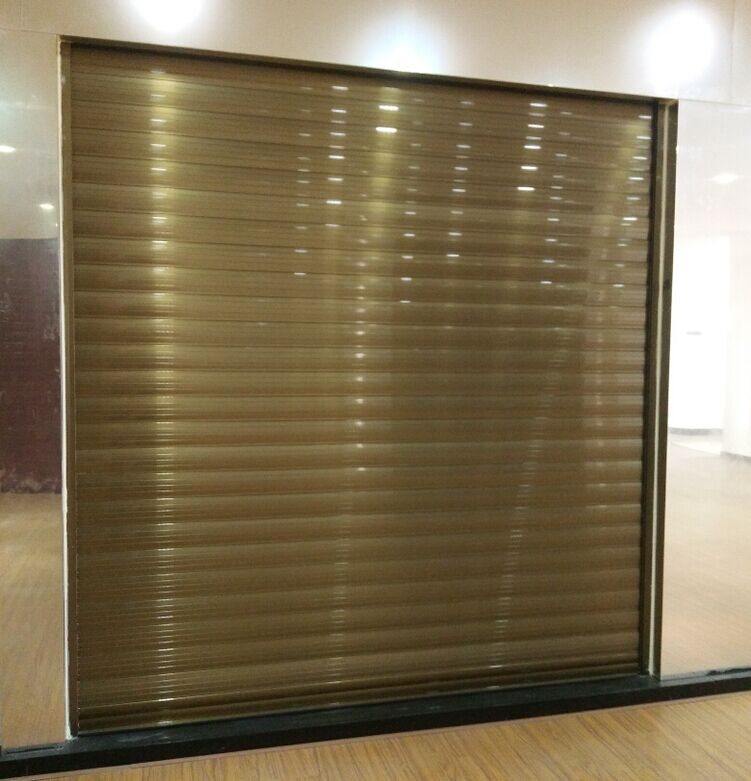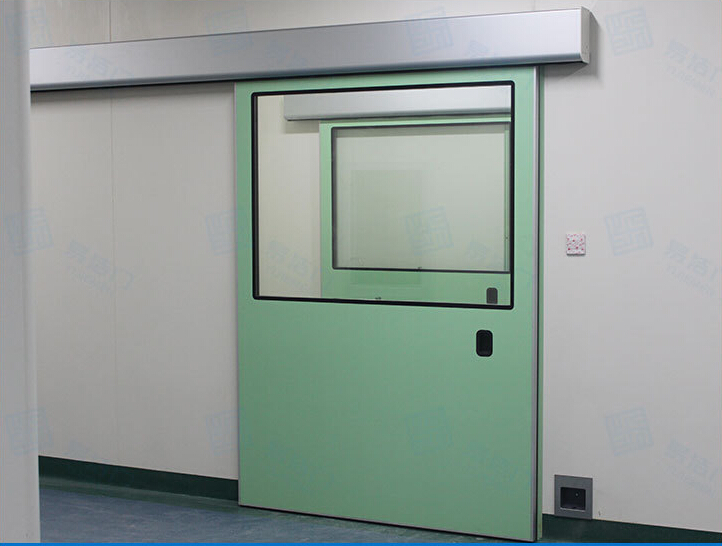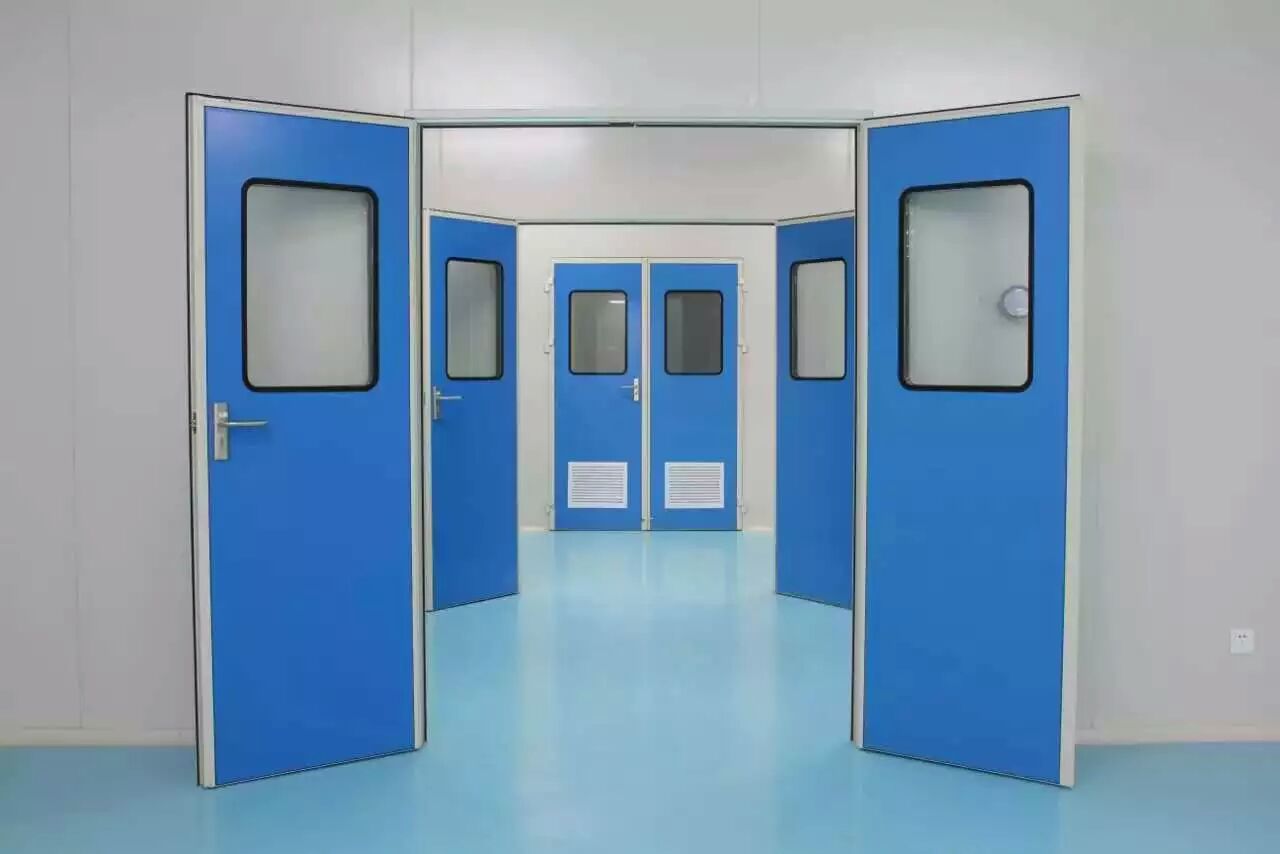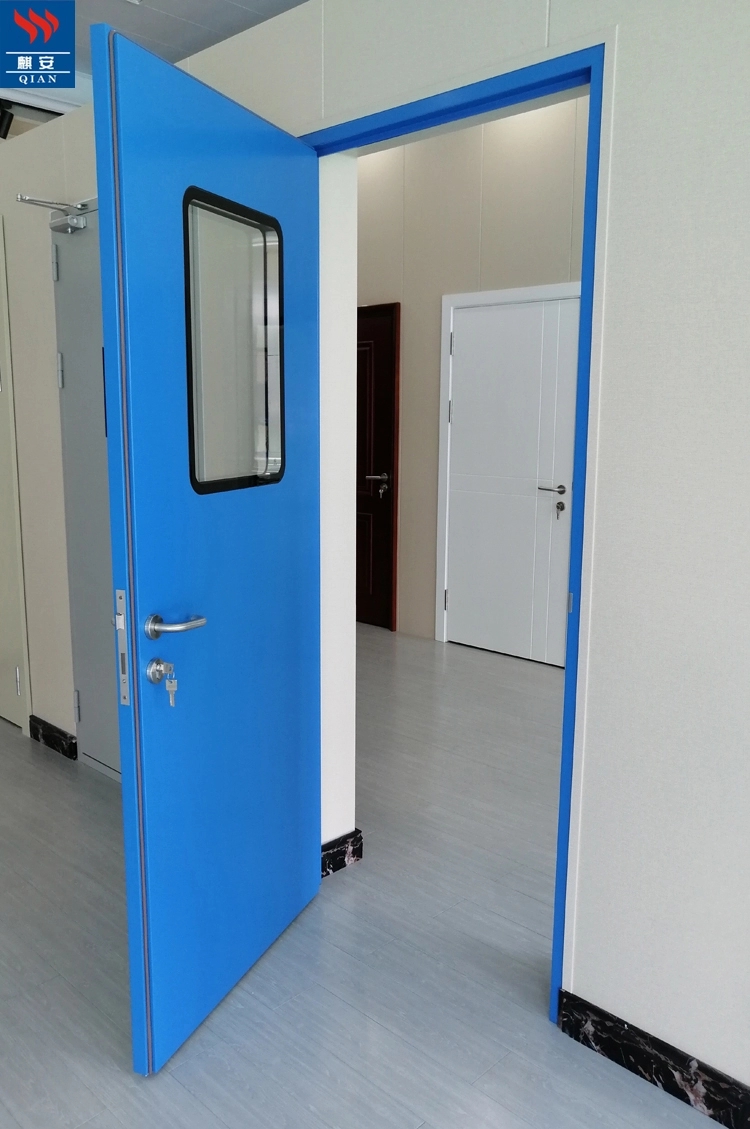Technical Advantages and Application Scenarios of Inflatable Dock Shelters Combined with PVC Rapid R
1. Technical Principles and Core Features
Inflatable Dock Shelters
Sealing Mechanism: Air blowers inflate the shelter to wrap around the sides and top of truck trailers, eliminating gaps between the dock and vehicle. This creates a fully sealed environment to prevent heat/cold exchange or dust ingress. Constant air pressure is maintained post-inflation for stability.
Materials and Structure: Shelters use high-frequency welded PVC-coated polyester fabric (0.9mm thickness) with UV resistance, low-temperature tolerance (-30°C/-22°F), and impact resistance. Pressure-balancing vents prevent deformation.
PVC Rapid Roller Doors
High-Speed Operation: Operating at 0.6–2.5 m/s (2–8.2 ft/s) with up to 1,500 daily cycles, these doors utilize variable frequency drives (VFDs) and encoders for precise positioning and energy efficiency.
Environmental Adaptability: High-density PVC or transparent flexible panels offer flame retardancy (NF-P92-503 M2 standard), dustproofing, and noise reduction. Wind resistance up to Level 8 (Beaufort scale) and temperature tolerance from -30°C to +70°C (-22°F to 158°F).
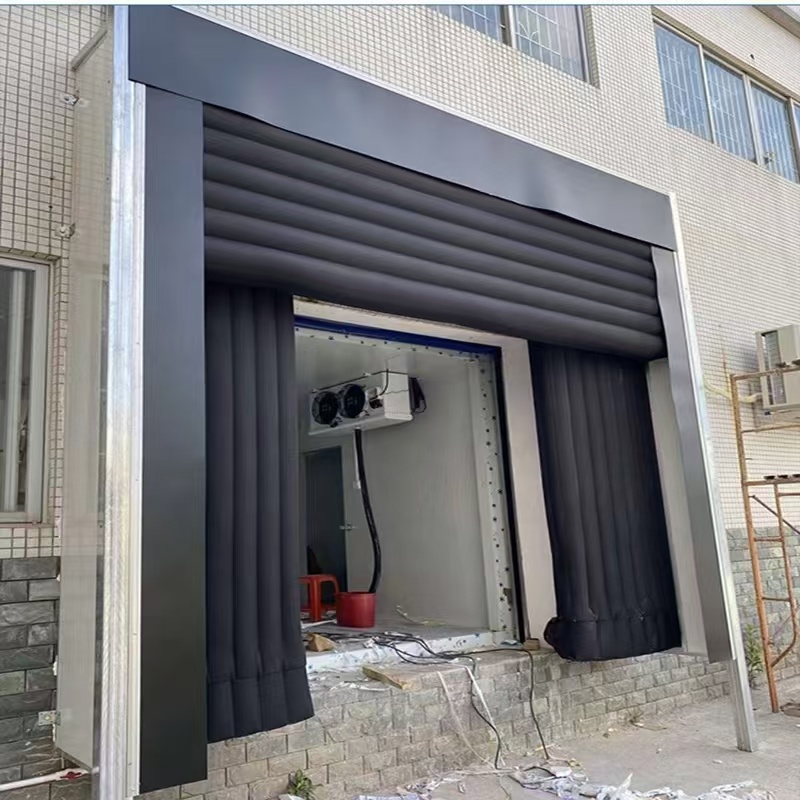
2. Synergistic Benefits of Combined Use
Balanced Sealing and Efficiency
Process Coordination: After truck docking, the inflatable shelter seals the gap first, followed by rapid opening of the PVC door to minimize temperature loss or contamination. Post-loading, the door closes first, and the shelter deflates, ensuring dual protection.
Energy Savings: The combination reduces cold loss by ~30% compared to traditional systems, while the PVC door’s speed cuts logistics cycle times, ideal for high-frequency operations (e.g., >500 daily cycles in distribution centers).
Integrated Smart Controls
Automated Systems: A centralized PLC synchronizes inflation pumps and door motors for one-touch operation. Optional radar or magnetic sensors enable unmanned automation.
Safety Redundancy: Collision sensors in the shelter and infrared safety edges on the door prevent damage from accidental vehicle movement or personnel entry.
Flexibility and Compatibility
Vehicle Adaptation: Shelters accommodate trucks with heights of 2.2–4.2 m (7.2–13.8 ft) and widths of 2.3–3.4 m (7.5–11.2 ft), while PVC doors support extra-wide openings up to W6.1 m × H8 m (20 ft × 26.2 ft) for cold storage or chemical facilities.
Modular Maintenance: Both components allow partial replacements (e.g., damaged shelter sections or worn door panels), reducing repair costs.
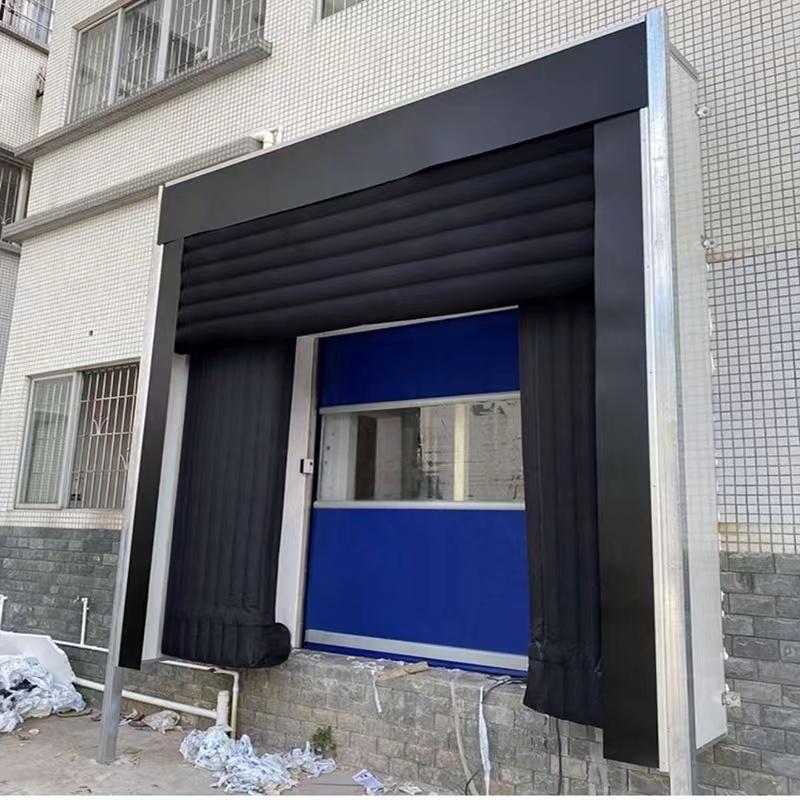
3. Key Application Scenarios
Cold Chain Logistics and Refrigerated Warehousing
Challenge: Energy waste from temperature leakage during loading.
Solution: Combined systems reduce cold loss by >40%, with PVC doors minimizing open-door durations.
Pharmaceutical and Food Processing Cleanrooms
Challenge: Contamination risks under GMP/HACCP standards.
Solution: Dual sealing achieves ISO Class 8 cleanliness (≤352,000 particles/m³).
Industrial and Chemical Storage
Challenge: Frequent heavy vehicle traffic causing wear, plus explosion-proof requirements.
Solution: Acid-resistant PVC coatings and reinforced shelter frames extend durability in corrosive or hazardous environments。
4. Operation and Maintenance Guidelines
Routine Maintenance
Shelters: Inspect air-tightness monthly; clean blower filters to prevent dust blockage.
Doors: Clean tracks monthly; lubricate hinges and encoders quarterly; replace worn panels promptly.
Troubleshooting
Common Issues: Shelter leaks (sharp object punctures) or door jams (track misalignment/motor overload).
Emergency Protocols: Manual deflation valves and hand cranks allow quick access during power outages.
Upgrades
IoT Integration: Install pressure and door-status sensors for predictive maintenance.
Energy Optimization: Solar-powered blowers and doors in sun-rich regions further cut energy use.
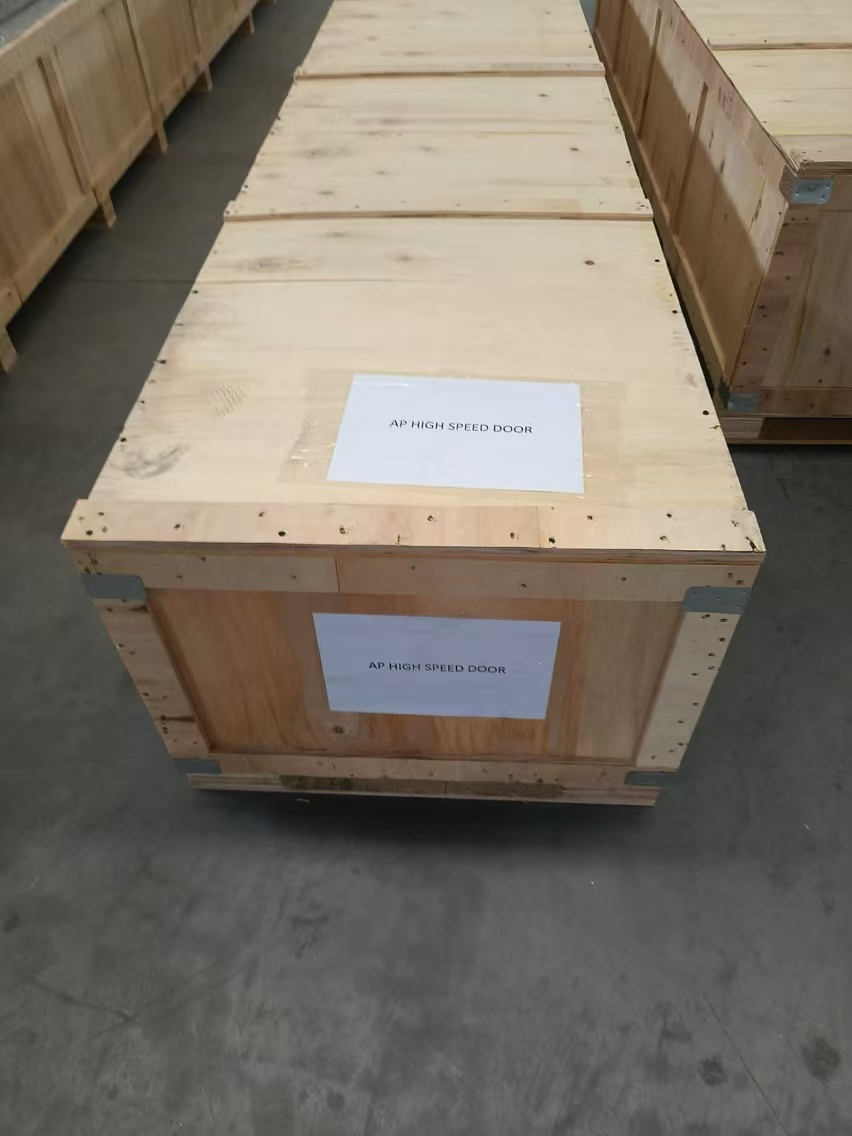
5. Future Trends
Material Innovations: Bio-based PVC and biodegradable shelter coatings to reduce carbon footprints.
Modular Design: Pre-assembled track and control systems shorten installation timelines.
AI-Driven Automation: Vision systems auto-adjust shelter pressure and door opening based on vehicle dimensions.
Conclusion
The integration of inflatable dock shelters and PVC rapid roller doors resolves the efficiency-sealing trade-offs of traditional systems, making it ideal for cold chain, pharmaceutical, and industrial applications. As smart technologies and sustainability practices advance, this combination will unlock greater potential. Businesses should prioritize sealing performance, energy efficiency, and maintenance ease when selecting solutions. For tailored assessments, consult industry reports such as Global Loading Dock Equipment Market Analysis or technical guidelines on smart logistics.
Q1: What are the key technical advantages of combining inflatable dock shelters with PVC rapid roller doors?
A1: The combination provides:
Enhanced Sealing: Inflatable shelters create an airtight seal around trucks, while PVC rapid roller doors ensure quick, secure access.
Energy Efficiency: Minimizes air exchange, reducing heating/cooling loss in temperature-controlled environments.
Durability & Speed: PVC doors offer fast operation (1-2 m/s), and inflatable shelters resist wear from frequent docking.
Q2: In which industries are these combined systems most beneficial?
A2: Ideal for:
Cold Storage & Food Logistics: Maintains consistent temperatures during loading/unloading.
Pharmaceuticals & Chemicals: Prevents contamination and ensures cleanroom compliance.
E-commerce Warehouses: Speeds up loading processes while improving energy savings.
Q3: How do inflatable dock shelters improve loading dock safety and efficiency?
A3: They:
Eliminate Gaps: Adjust to varying truck sizes, preventing accidents and debris entry.
Reduce Downtime: Faster truck turnaround due to seamless docking and rapid door operation.
Protect Goods: Shield products from weather, dust, and pests during transfers.
Q4: What maintenance is required for this combined system?
A4:
Inflatable Shelters: Regular checks for air leaks, fabric wear, and proper inflation.
PVC Rapid Doors: Lubrication of rollers, sensor calibration, and occasional belt tension adjustments.
Q5: Can these systems be customized for specific facility needs?
A5: Yes, options include:
Custom Sizes: Tailored to fit unique dock dimensions or oversized trucks.
Insulated PVC Doors: For extreme temperature environments.
Automation Integration: Sync with warehouse management systems for hands-free operation.
Recommended Products
up to dateNiue Automatic Door Accessories
- Durable PVC Fast Rolling Door Fittings for Enhanced Security
- Automatic Repair of Zipper Door Plastic/Polymer Rails
- Smart Automatic Door Sensor for Fast Rolling Access Control
- Soft Fast Gate Control System 1.5kw Servo Motor and Control Box
- Automatic Access Control Square Surface Mount Infrared Non-Contact Switch
- Explosion-Proof Reinforced Self-Limiting Electric Heating Belt
- Explosion-Proof Shielded Self-Controlling Temperature Electric Heating Belt
- Heating Belt for Anti-Freezing, Heating and Heat Preservation of Cold Storage Doors
- 40W flame retardant explosion-proof self-limiting electric heating belt
- High Speed Door Zippers Industrial Door Zippers
- Safety Beam Sensor Use for Automatic Door
- Wireless Hand Sensor Switch For Automatic Door
- Hospital Door Foot Sensor
- Automatic Sliding Door System Wireless Touch Press Switch
- Automatic Sliding Door IP65 Waterprooft Wireless Hand Press Switch
- Automatic Door Microwave Sensor
- Reflective Type Infrared Detector
- Automatic High Speed Door Infrared Radar Sensor CNB-204G
- Aluminum Alloy Wind Section For PVC rapid roller shutter door
- Aluminum Bottom Section For PVC high speed rolling shutter door

